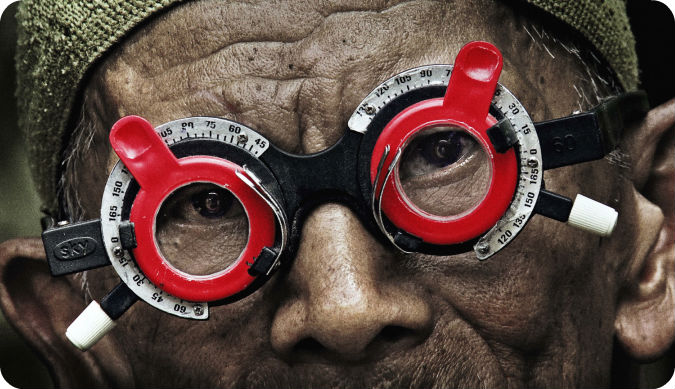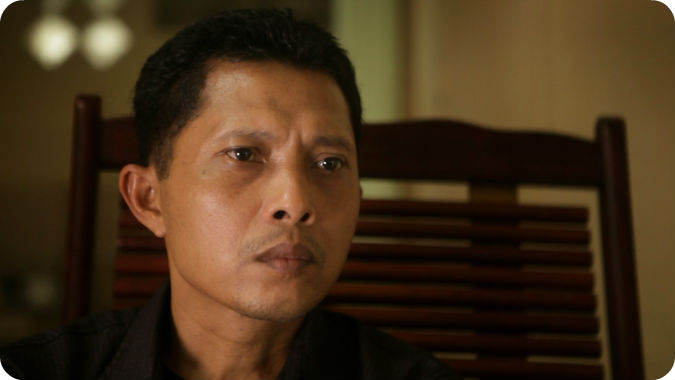
Everyone sometimes does something which might not be a good thing to do. Despite that knowledge we still decide to go on with our lives because we think of reasons to justify our actions. If someone confronts us on it, we are able to explain why we have done something and often not feel any guilt about it, simply because we tell ourselves that something was allowed.
With his controversial documentary The Act of Killing, Joshua Oppenheimer told us which gruesome events took place in Indonesia in the sixties. More than a million people were murdered because they were said to be communists and Oppenheimer pointed his camera at the men responsible. They openly told stories about what they did and even re-enacted them in a variety of film styles, which made it even more surreal.
In that documentary, the focus was primarily on the perpetrators. Survivors and relatives showed up only briefly. With The Look of Silence the focus is on one family where the eldest brother, Ramli, lost his life in a terrible way

Just like The Act of Killing this movie will shock you as much. A news report by NBC in 1967 is shown, where it tells, without emotion, that the people who were captured had to work on plantations, were starved or were sometimes released to be killed by the locals. In an interview an Indonesian man tells that some communists literally asked whether they could be slain, even though this seems extremely unlikely.
Some men who were responsible for a large number of deaths tell in detail how they murdered Ramli during in an interview that was shot more than a decade ago, at the place of execution. This footage is viewed by his brother Adi, who visits various people for his work as an optician. In The Look of Silence director Oppenheimer follows him in his quest for more details about what happened to his brother. He speaks to several officials, including the man who carried out the execution, the one who put his name on a list of people who were to be killed and a number of people in key political positions. He not only tries to ask questions about what happened, but is also looking for a sense of remorse from these men. Will they see that innocent people were slain, that there are still many survivors who have difficulty that the culprits have a certain status in society and that they are responsible?
The men all seem to have their justification for their actions and therefore do not feel responsible what was happening at the time. As long as this doesn’t change, it is questionable whether the relatives will ever find peace.
It is clear that the interviewed don’t like talking about the past when the questions become more difficult. The past should not be talked about if the questions are too political. You notice the frustration it evokes with Adi. It is also clear the events of fifty years ago have left their mark on society. There fear still exists. Both his old mother and his wife do not want him talking to these people because they are afraid that he might be poisoned or kidnapped. The events are still a taboo. Therefore this documentary, like The Act of Killing, is so important. It makes people very uncomfortable. It is a period that many people want to forget, but that is something The Look of Silence does not allow.


![]()
